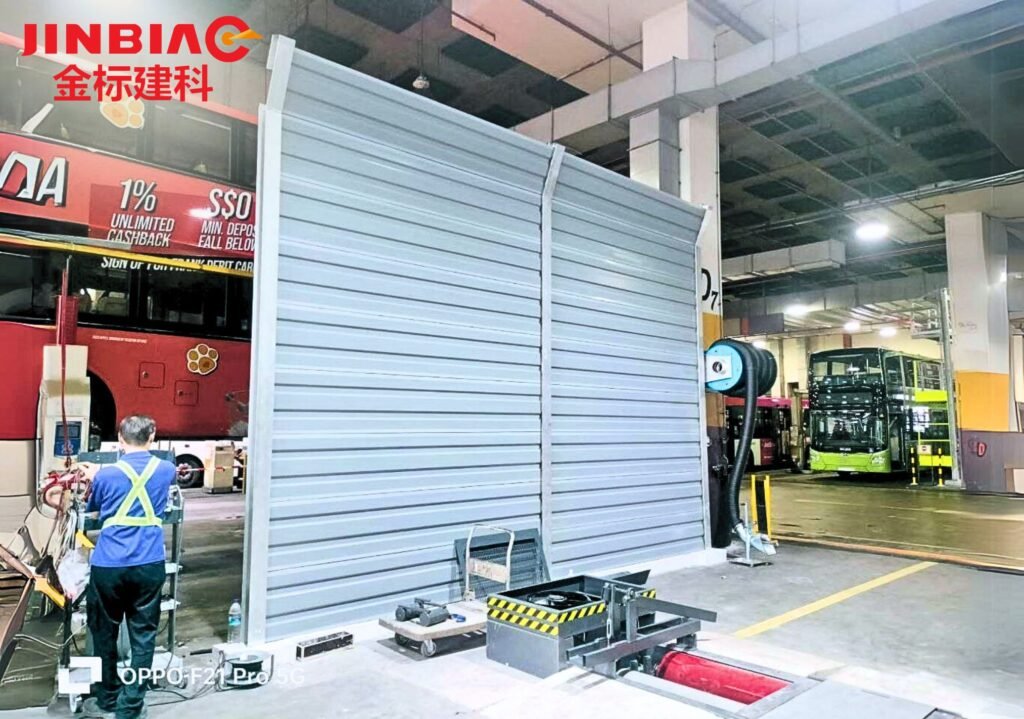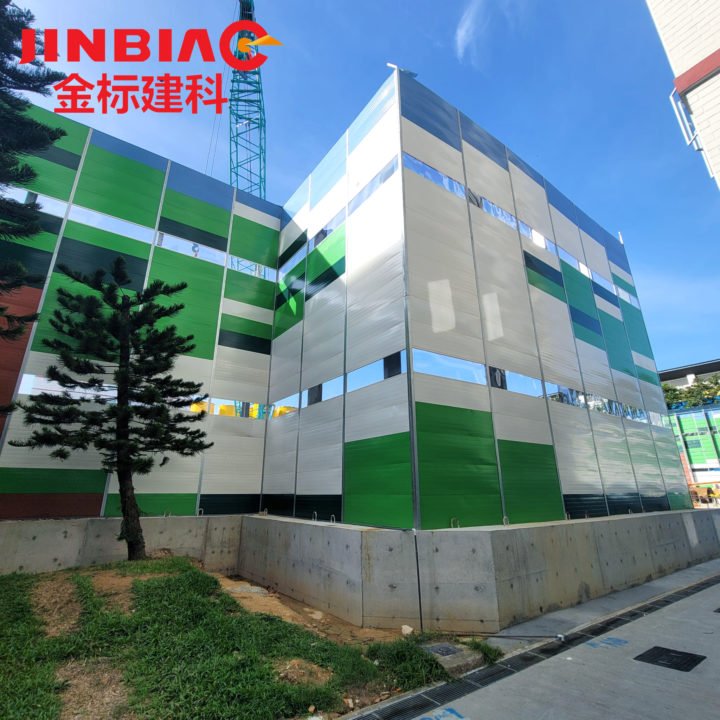
Construction in urban environments like Singapore’s can be likened to surgery: precise, critical, and often very noisy. The Island City’s infrastructure development is the heart of its progress. Yet, the growth exceeds the threshold of acoustic comfort, disturbing residents and undermining Singapore’s reputation as a tranquil place.
Here, we explore how innovative construction techniques and urban planning are transforming not just the physical landscape but also the aural environment of the Lion City.
1. Noise Pollution Solutions
● Sound Barriers
High-density polyethylene barriers, stacked geometries, and specially designed concrete barriers are classic ‘band-aids’ for noise pollution. Placed strategically along construction sites and major roads, these barriers absorb, reflect, and deflect sound waves, attenuating noise levels significantly.
In a country where space is premium, architects and engineers are pushing the envelope, creating an aesthetically pleasing and functional sound barrier in singapore that blends into the urban fabric.
● Noise-Reducing Materials
Silent concrete, absorptive cladding, and anti-vibration pads – these are not just buzzwords. They are the future of Singapore’s noise management. Sound barriers are designed and used in such a way that they either reduce the amount of sound energy or prevent its propagation, making the construction process quieter and the city calmer.
● Construction Scheduling and Guidelines
Cutting through silent evenings or disrupting neighbourhood tranquillity during weekends is a recipe for community discontent. Adhering to strict noise level guidelines and designing construction schedules to avoid high-traffic times and sensitive periods ensures that noise pollution is managed thoughtfully. These schedules are not static; planners adjust them dynamically to accommodate both project deadlines and local imperatives.
2. Innovative Construction Techniques
● Prefabrication and Modular Construction
Off-site assembly and on-site installation have redefined the speed and efficiency of construction. Prefabrication not only reduces project timelines and labour costs but also limits noise at the source. As modules arrive at the site for assembly, the minimal on-site work minimises the duration of disruptive noise, ensuring a more peaceful coexistence with the surrounding community.
● Off-Site Construction
Like a silent ballet, off-site construction is an art choreographed away from the public ear. Modules, walls, and even entire building floors are prepared with meticulous accuracy in off-site facilities, and then transported to the site for assembly. This approach optimises productivity, reduces environmental impact, and drastically cuts down on the noise that would have otherwise emanated from the traditional construction process.
● Noise-Cancelling Technology
Innovations in noise-cancelling technology are finally making their way to the construction industry. Similar to the headphones that silence the roar of jet engines, wearable devices warn workers of the dangers of excessive noise levels and offer passive and active noise reduction technologies to shield their ears from harm.
3. Green Spaces and Urban Planning
● Incorporating Greenery for Noise Absorption
Mother Nature’s green thumb is hard at work in the fight against noise pollution. Trees and plants offer a multi-layered acoustic defence, from leaves that rustle in the wind to trunks that absorb vibrations. Integrating green spaces within densely constructed areas serves as much more than just a visual break – it’s a strategic move to ensure that Singapore’s soundscape remains balanced.
● Designing Buildings with Soundproofing in Mind
Constructing a building to limit noise transmission requires an architect’s finesse and an engineer’s precision.
Singapore’s skyline is a testament to soundproofing goals, with structures like the Esplanade and Gardens by the Bay that are not just architectural marvels but also efficient sound barriers. As developers push for taller and more beautiful skyscrapers, soundproofing is not just an element of design; it’s a performance standard.
● Urban Planning Strategies to Minimise Noise Impact
The cradle of acoustic innovation lies in urban planning. By strategically positioning high-rises, undergrounding major traffic arteries, and maintaining sound buffers such as historic districts, Singapore’s urban planners are pioneering models for noise mitigation. The Evolution of Quiet signs the beginning of the city’s shift from noise containment to noise resilience.
4. Community Engagement and Communication
● Transparency in Construction Plans
An informed community is an empowered community. Transparent communication about upcoming construction projects, their timelines, and their potential noise impacts gives residents an opportunity to plan and adapt. Equipped with this knowledge, communities can prepare and request specialised noise measures for particularly sensitive areas.
● Public Awareness Campaigns
Awareness is the first step in any change. Public information campaigns articulate the importance of reducing construction noise and the collective responsibility of keeping Singapore’s sound environment healthy. Through social media, city events, and traditional media outlets, these campaigns resonate with a diverse demographic, inducing a shared understanding of noise’s quality-of-life impact.
● Feedback Channels for Residents
Listening is a two-way street. Constructive feedback from residents is invaluable in gauging the efficacy of noise management strategies. Accessible feedback channels allow residents to voice their concerns and contribute to the iterative process of refining Singapore’s construction policies. This dialogue fosters a collaborative approach between the public and private sectors, driving towards a quieter and more resilient city.
Conclusion
Urban development is a symphony, and each note must be harmonious with the environment. As Singapore continues to grow, the pursuit of silence amid the cacophony of construction is a testament to its commitment to sustainable and liveable urban spaces.
The integration of sound barrier in singapore into the fabric of Singapore’s urban planning and construction techniques exemplifies a balanced approach that can be emulated globally.
For those involved in the city’s metamorphosis – planners, residents, and construction professionals – this listicle serves as a manifesto for a unified effort towards a silent Singapore. With technology, innovation, and community collaboration at the forefront, the journey towards a more musically rich and peaceful urban oasis is well underway. Our ears await the respite, and our actions today will resonate through the city’s soundscape for generations to come.
Hebei Jinbiao is a leading company in Noise Barrier products and Fencing products in Singapore. We guarantee to provide you with the most high-quality Sound Barrier and Fencing products along with our dedicated assistance. Do not hesitate to contact us. We are looking forward to helping you solve your noise issues, safety issues and protecting you from noise pollution as well as ensuring your safety.

